Our Sunday floral story : The Making of a May Day Altar at Tawley Rock
A favourite month of the year, Bealtaine brings summer joy this week.
Happy Bealtaine & first weekend of May, may the fourth be with you and a belated Happy First of May where I hope you washed your face in the morning dew to welcome yourself into summer days. I am currently sitting at my desk looking out at the sun drinking in the honey scent of my really nicely flowering wisteria which has wondrously come back despite some neglect. This particular week each year holds an air of frisson for me. Perhaps it is because as a child, I would make May altars in my room with flowers from our garden & hope that the faeries would come to visit. Perhaps it is the summer terms in school and college, when much lying on grass face up to feel the warmth of the sun seemed so much more fruitful than looking down at the books I should have been studying!!!
In thinking about this week’s post, my memory of our making a May Day inspired Mass Rock garland for our book ‘Bláthanna’ popped back in my brain. I thought that a re-read of our chapter ‘The Making of a May Day Altar at Tawley Rock’, would remind you of our beautiful native floral traditions to start this 5th month.
Enjoy your bank holiday and may we all find a bluebell carpet in a woodland spot this weekend too. X Ruth
THE MAKING OF A MAY DAY ALTAR AT TAWLEY ROCK
The first time we saw Tawley Mass Rock, Co. Sligo was when we dressed it for a wonderful wedding on a warm autumnal Friday. We had dressed the gate in orange viburnum branches & made moss and lichen pieces to dress the altar. It was from this altar that a druid would bind the couples hands and hearts together in matrimony.
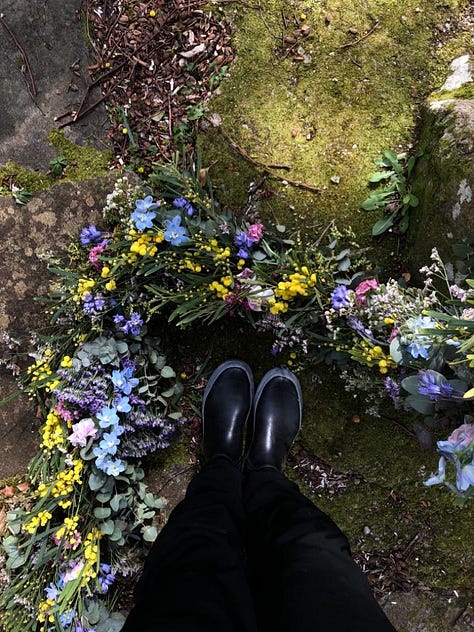
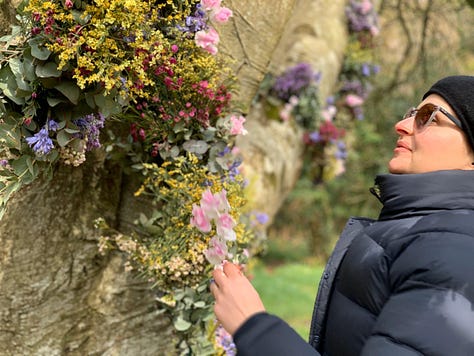

The coming of the month of May, the shafts of speckled light amongst the bluebells swaying in a first-day-of-summer breeze, the mossed carpet marking the sacred space - it all inspired us to dress the stone tables, which stood in a row. Working under the large beech tree, the sunshine coming through was dappled by it’s leaves.
North-west Europe has always had a strong tradition of celebrating Mayday. It was seen as a time for remembering ancient customs that, for thousands of years celebrated the arrival of summer whilst protecting homes against the supernatural. Wildflowers and woodland wonders especially those in yellow & blue, are placed on altars in kitchens and churches. Be it the Goddess of Summer or the Virgin Mary, people with evil intentions could never pass such beautiful blooms and cause harm to souls nearby.
The beech tree (Fagus sylvatica), or crann feá in Irish, is known as the ‘Mother of the Forest’ and was introduced to Ireland by the Normans. Our beech tree in this flower story has ancient outstretched arms - a fitting inspiration for a cathedral architect - which fan out, protecting this spiritual copse of simple loveliness. The Irish god Ogma, a leading warrior of the Tuatha Dé Danann, and credited with the writing of the OghamAlphabet, wrote upon beech.
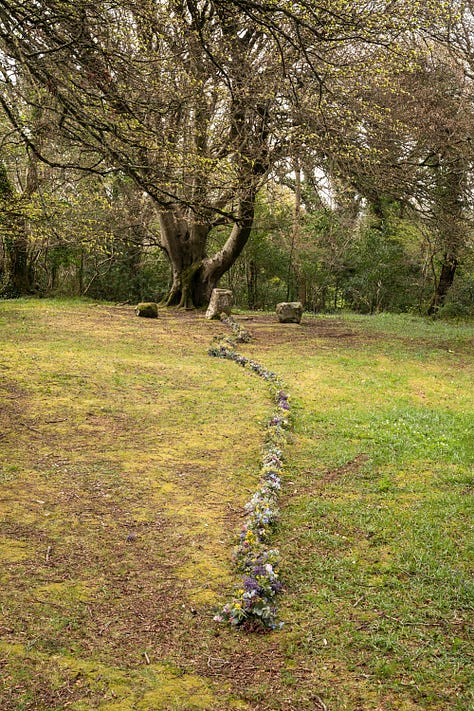
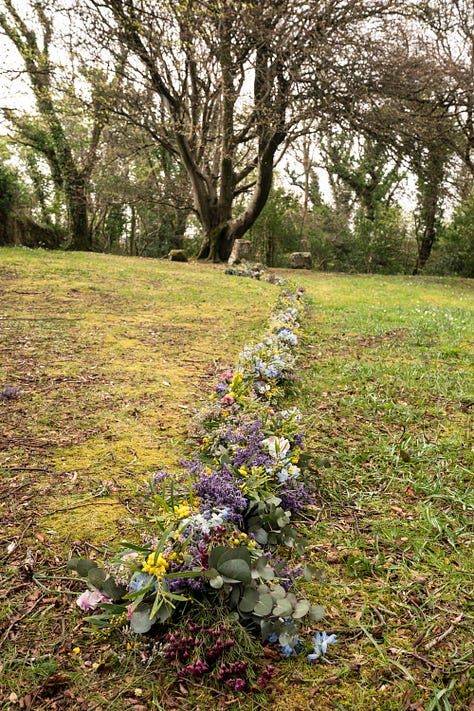
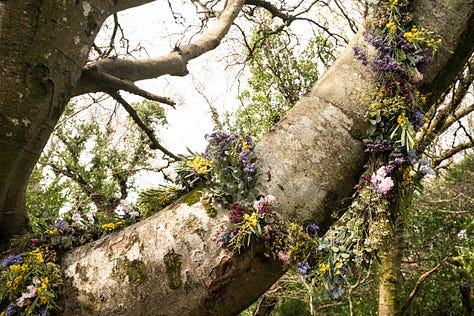
Our Appassionata crew prepared the 20 metre garland with bases of green,was a blessing given the cold windy weather conditions of the shoot day. It had been a low temperature Spring then so leaves were only starting to appear. Clusters of waxflower, limonium, eucalyptus were layered as if making a large floral rope from which to swing. Kasia & Ultan unfurled the length of flowers, attaching it to the largest branch of the beech tree. We then wove, curved, draped, & wandered the floral rope until it disappeared behind the bullaun, a stone that fills with water, as if acting as an ancient baptismal font.
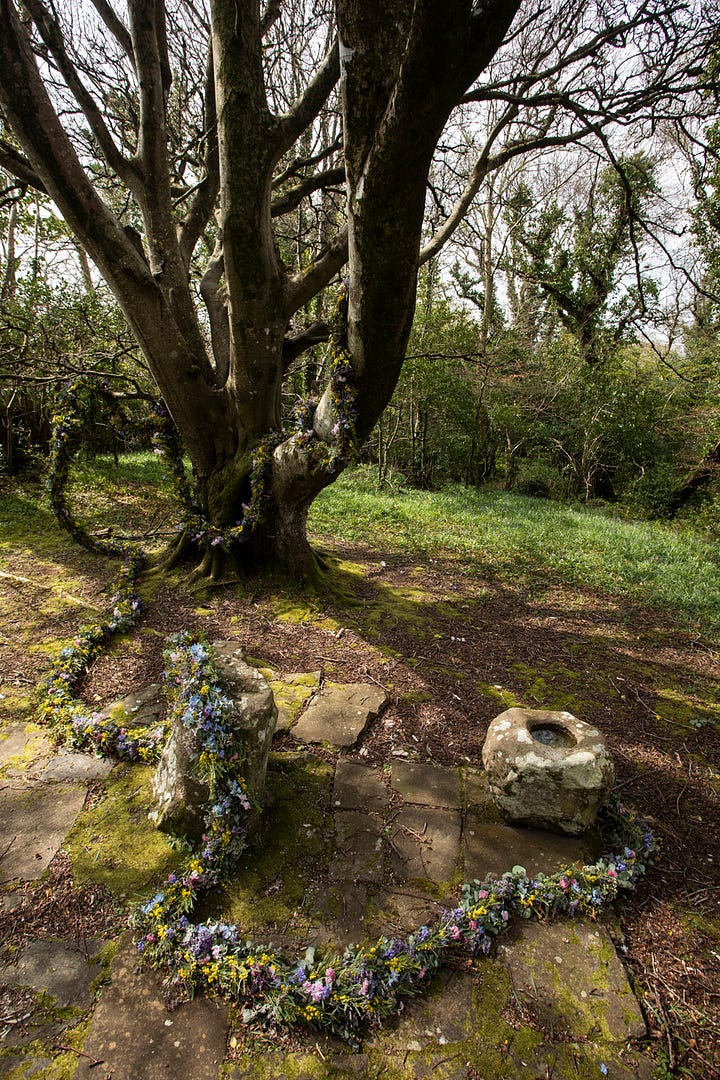
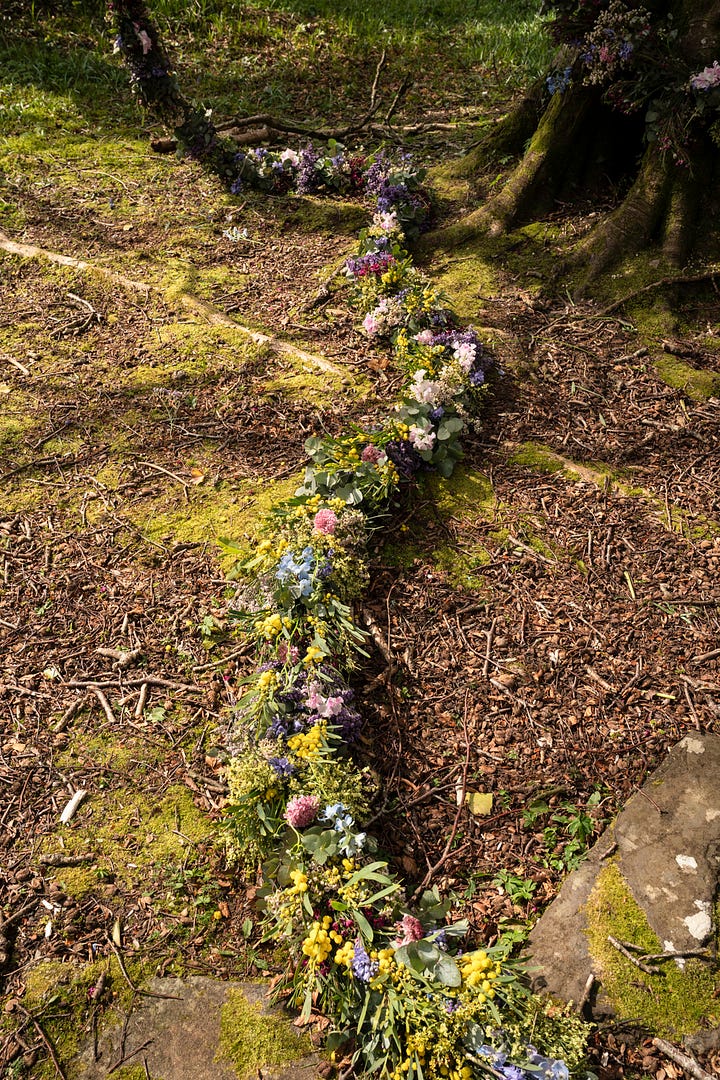
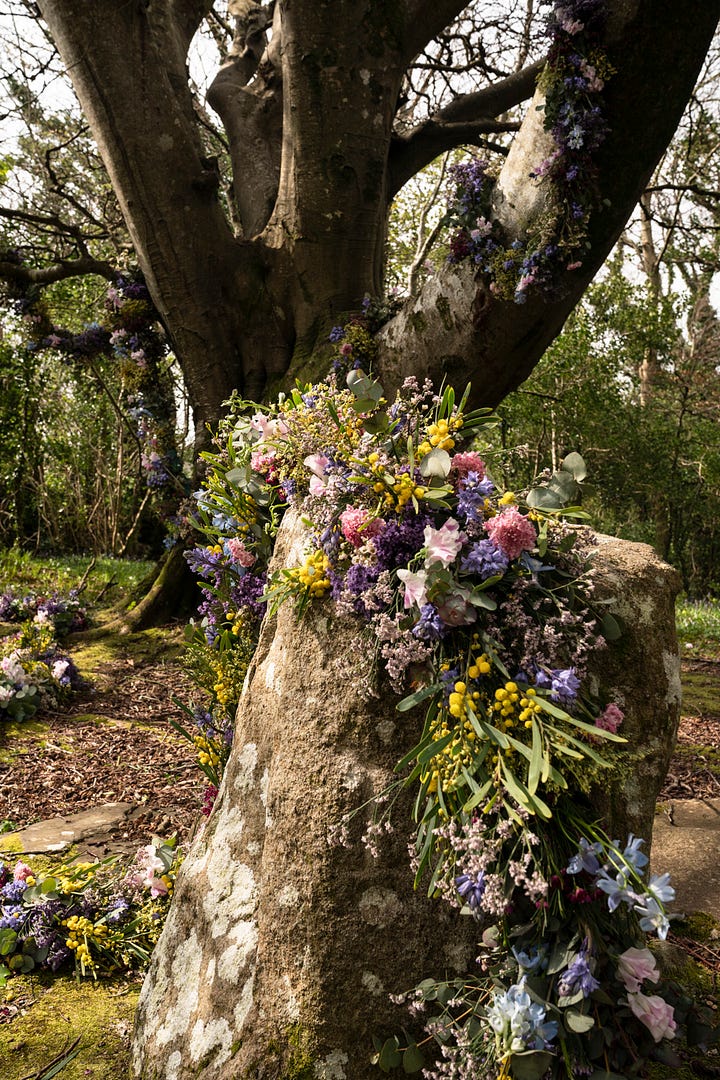
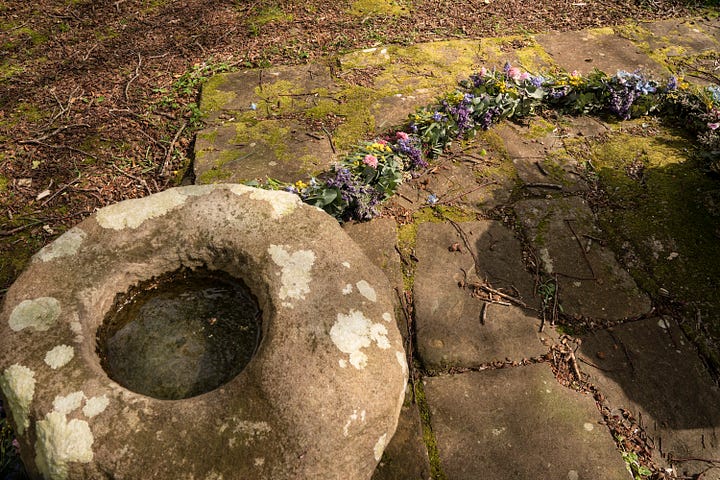
We had intended a whole other overtly colourful piece, but the scene & the weather meant that it would be better to create a woodland sentiment. The strength of the tree’s stature made us juxtapose a a delicate display of seasonal flowers that fluttered in the wind before the beech - a guest at it’s own May Day ceremony. Yellow fluffy mimosa, pink sweetpea, pink scabiosa, sky blue larkspur punctuated the garland as it meandered through a Mass Rock moment.
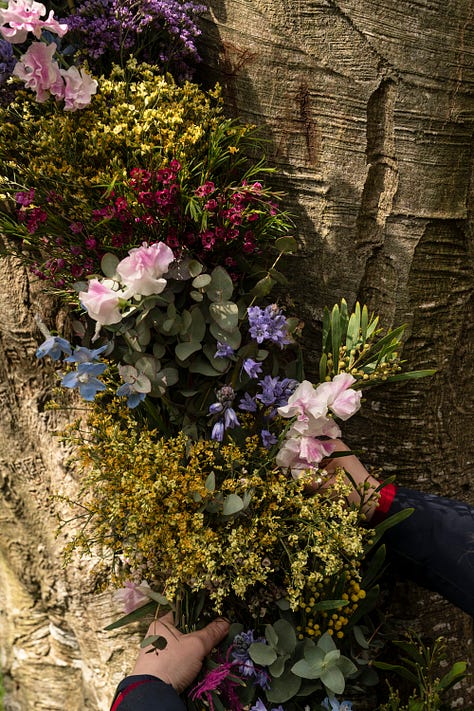

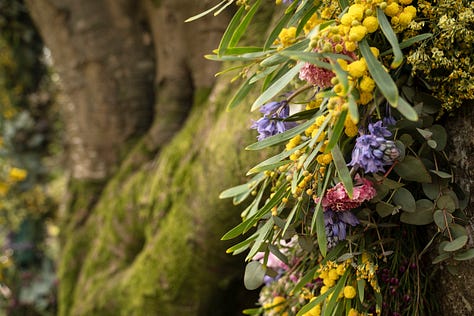
We saw it as an experiment in form, function and fantasy, a contemporary surrealist take on the garland dressing – as if the garland were a trick of the light that might go unnoticed when first entering the spiritual space. But if you were to draw nearer to the tree, the sacred stones, the grouping of wild garlic and bluebells, the May Day garland appears as if a wavering spread of summer smoke. Our unorthodox floristry added a lightness of touch for this flowery necklace in this space.
WHAT IS A MASS ROCK?
Mass Rock sites are prolific around Irelands countryside. They date from the era of the Penal Laws, when Catholic Mass was prohibited. This prohibition led to communities creating sacred spaces in which to celebrate Mass & other Eucharistic celebrations. Traditionally ancient stones were taken from a church ruin and imprinted with a cross. Many of the sites were chosen because they were already considered sacred or were nearby to a spiritual site. The majority of these Mass Rocks were in fields, copses and glens, they were known to locals, and the ceremony times were passed orally so that the rituals could go on undetected…The Irish landscape became it’s own arena of devotion and piety during this period of persecution.
The proximity of Tawley Rock to Creevykeel (one of the largest court cairns in Ireland & a place of power) within the same beech grove would lead us to believe that the Mass Rock was originally created in druidic times. The combination of the beech spiritual symbolism & it’s location would lead us to believe that it became the most obvious choice for a sacred space to place these bullaun stones of faith.
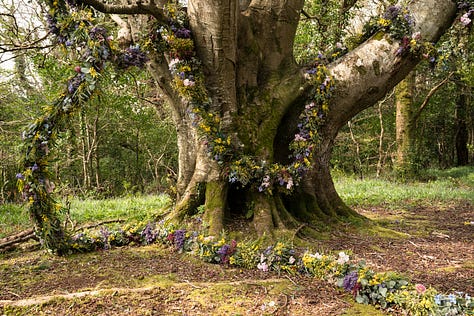
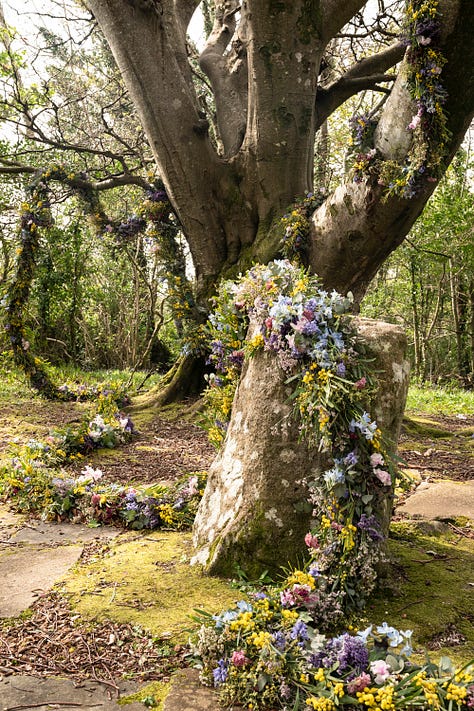
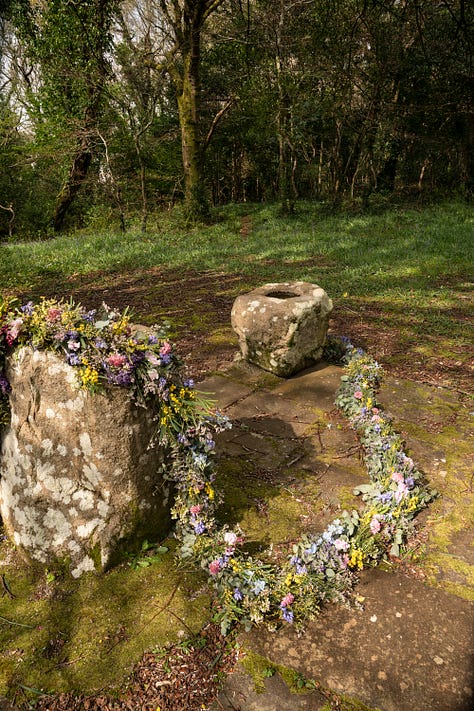
Credits for ‘Bláthanna : Irish Spaces in Flower’ include the amazing photography by Seán Breithaupt & Yvette Monahan, and amazing flowering by Kasia Skopinska & Ultan Devaney et moi. X


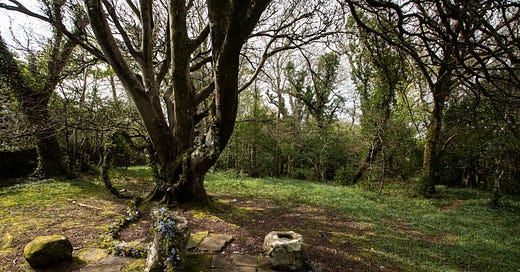




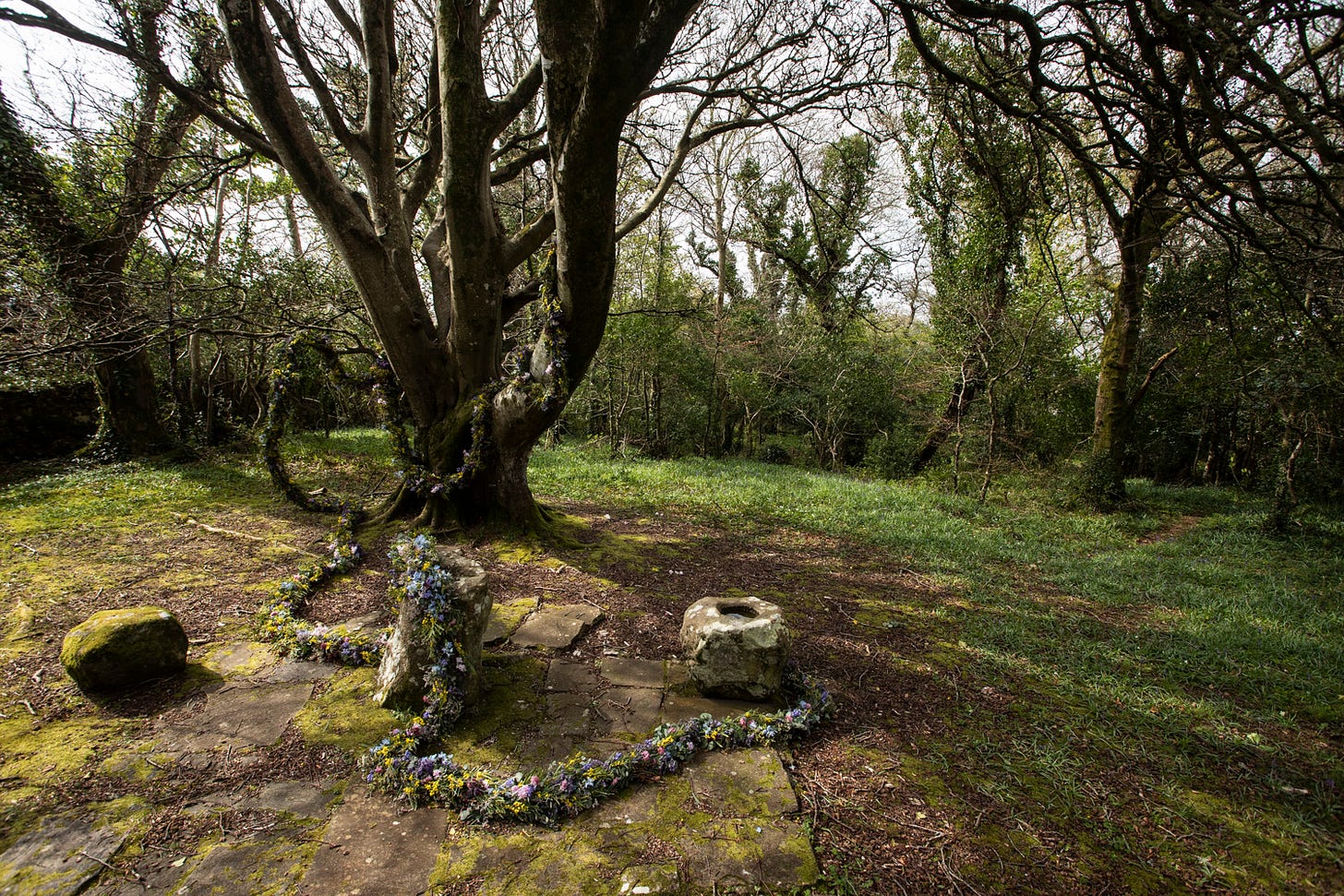
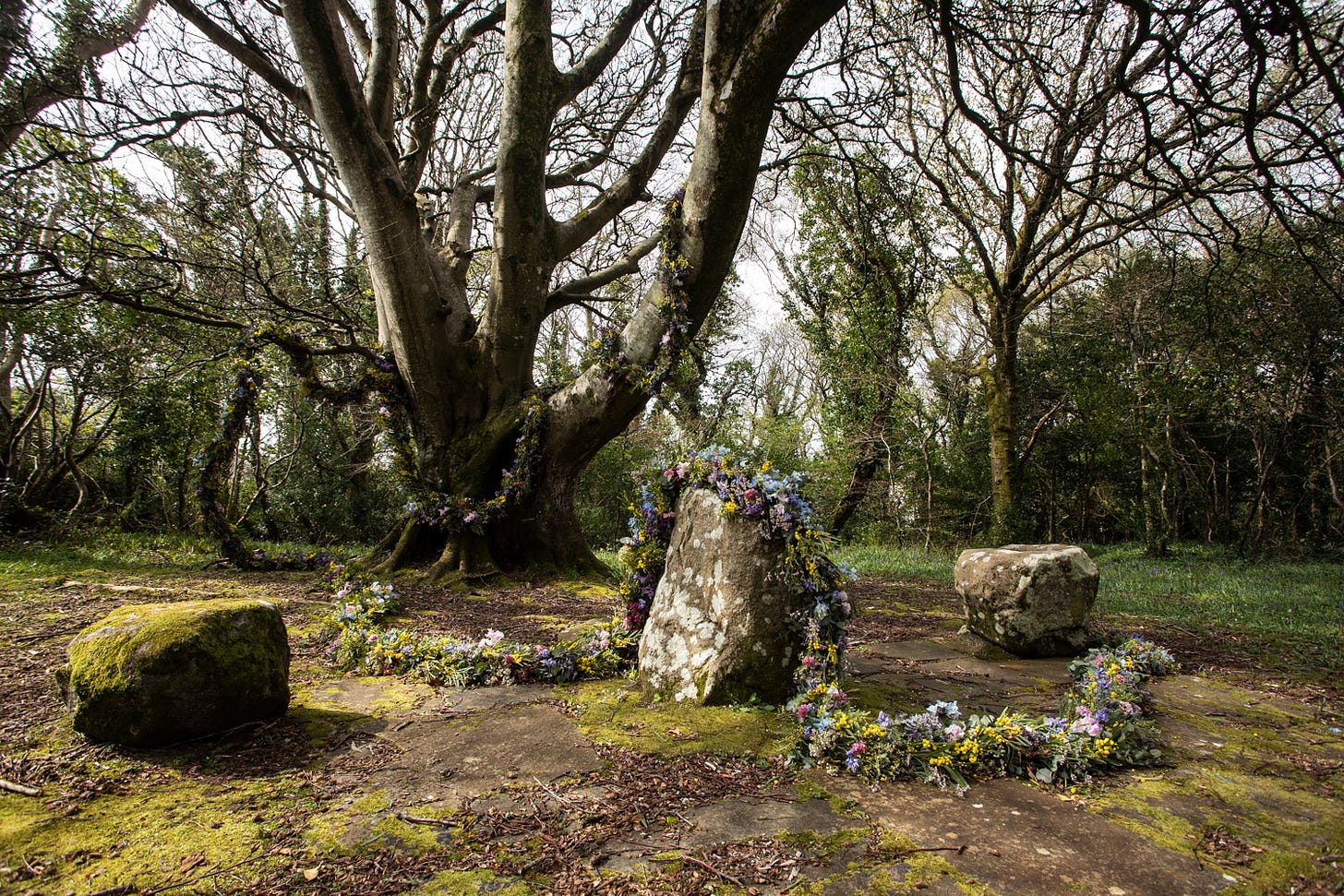
What a beautiful and symbolic garland. Is this an annual tradition in Ireland?